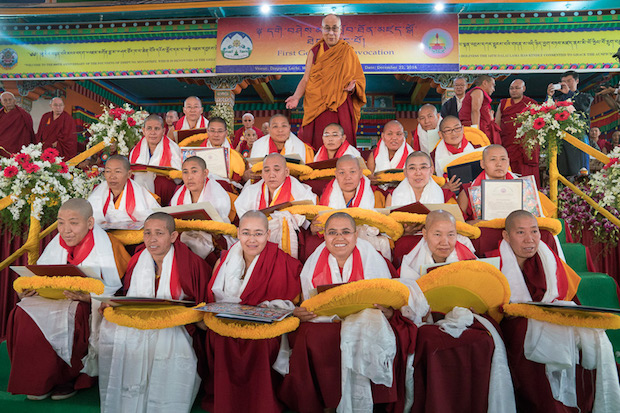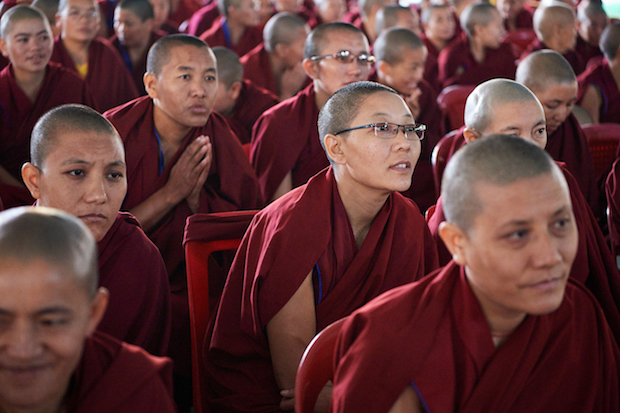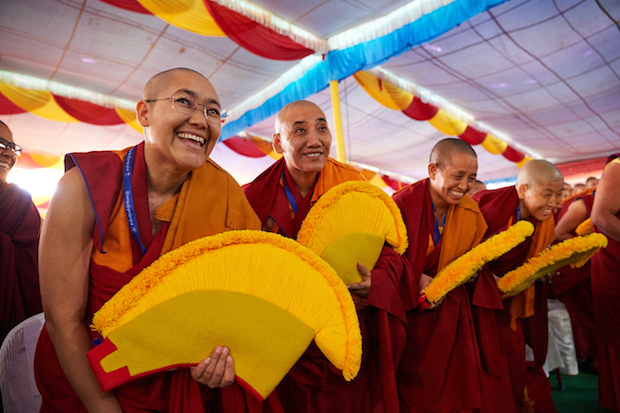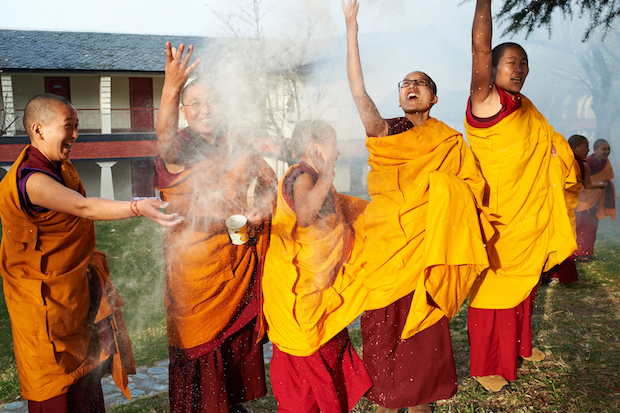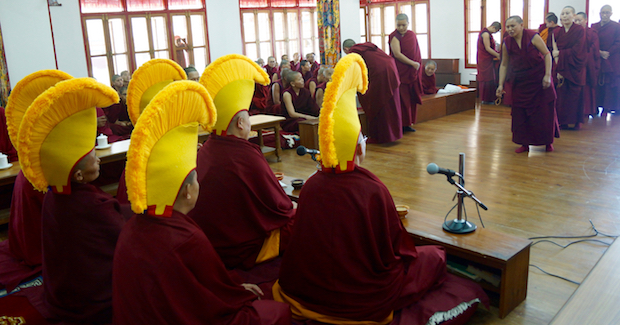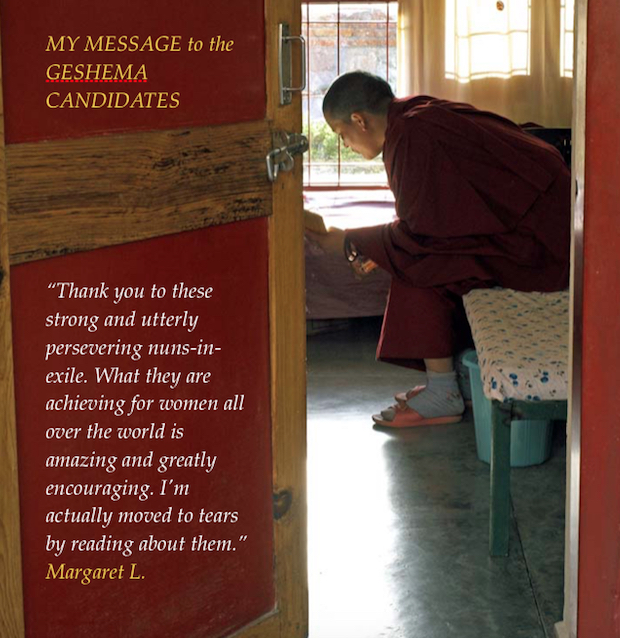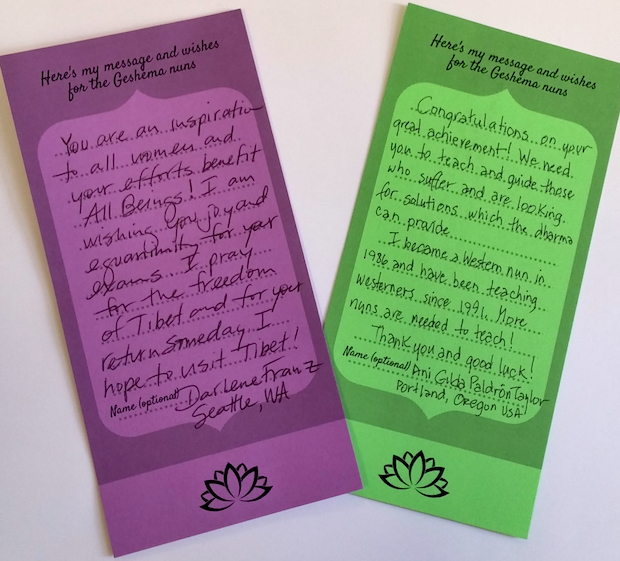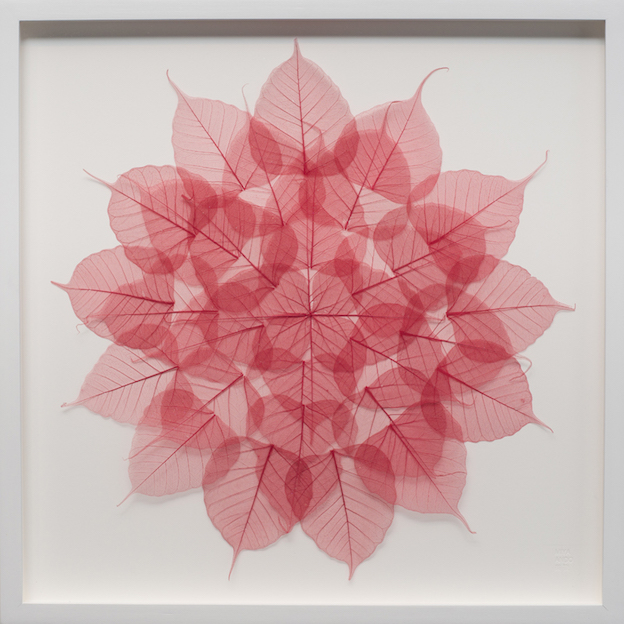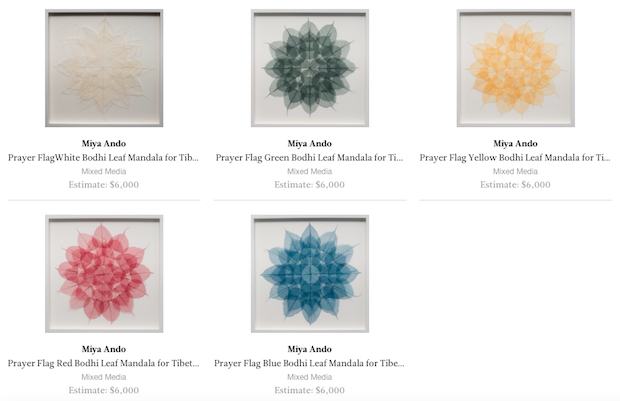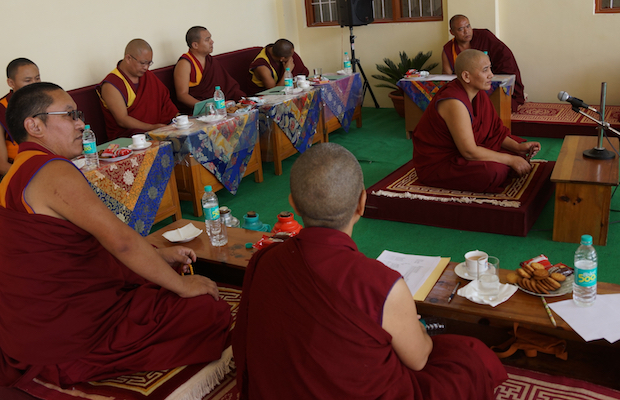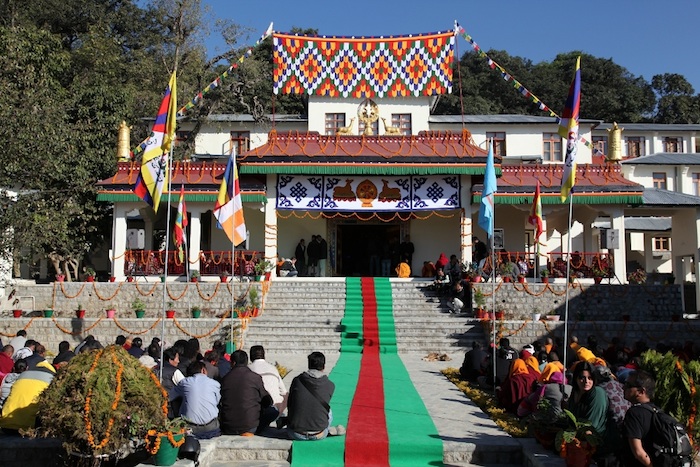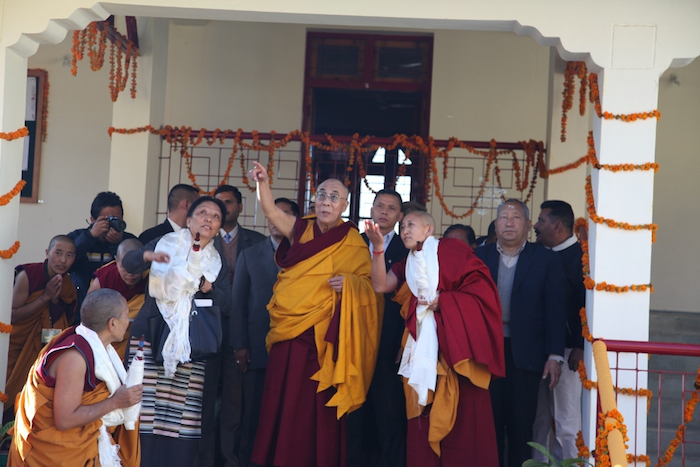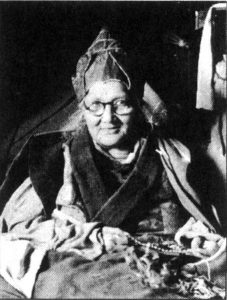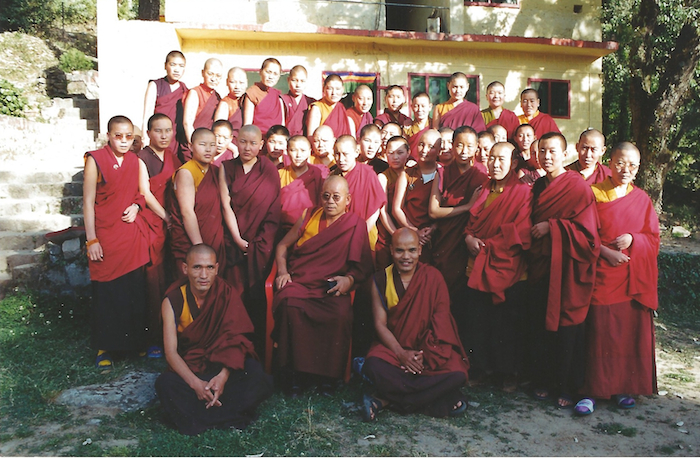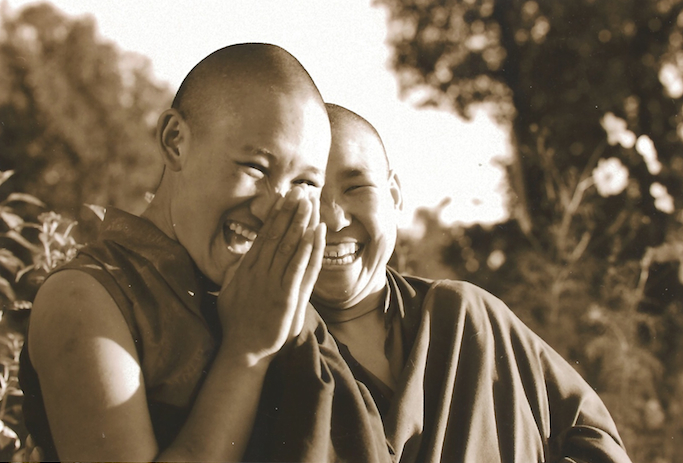The most important month in the Tibetan lunar calendar is Saga Dawa, the 4th month. This year Saga Dawa starts on May 23, 2020, and runs until June 21.
The 15th day of this lunar month, the full moon day is called Saga Dawa Düchen. Düchen means “great occasion” and this day is the holiest day of the year for Tibetan Buddhists. This year, Saga Dawa Düchen falls on June 5, 2020. Saga Dawa Düchen commemorates the birth, enlightenment, and parinirvana of Buddha Shakyamuni. In other Buddhist traditions, it is known as Vesak or is sometimes called Buddha Day.
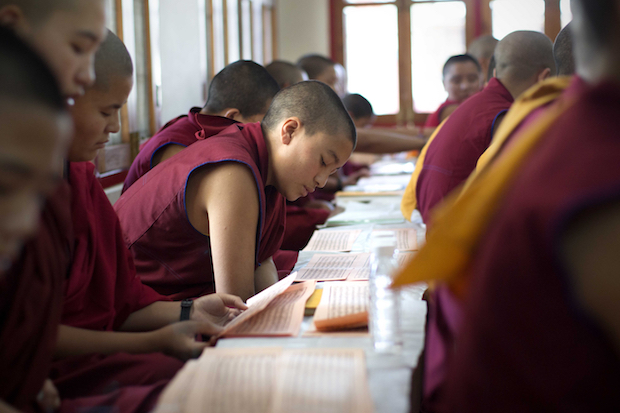
A young Tibetan Buddhist nun at Dolma Ling Nunnery reads scriptures to mark Saga Dawa. Photo courtesy of Tenzin Sangmo.
Saga Dawa is known as the month of merits. Tibetan Buddhists make extra efforts to practice more generosity, virtue, and compassion in order to accumulate greater merit. Tibetans believe that during this month, the merits of one’s actions are multiplied and that on the 15th day of the month the merits of one’s actions are hugely increased.
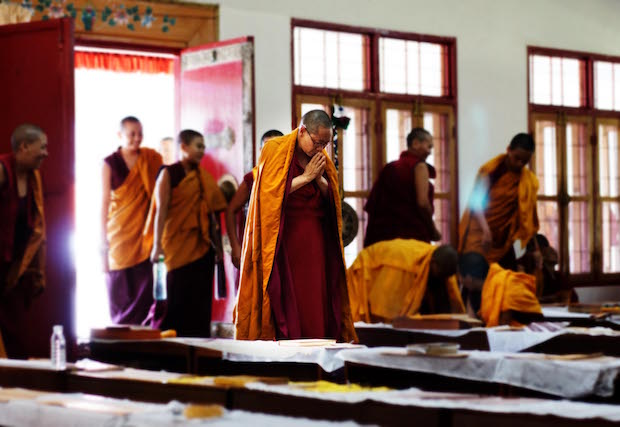
A senior Tibetan Buddhist nun prostrates at Dolma Ling Nunnery during special ceremonies to mark Saga Dawa. Photo courtesy of Tenzin Sangmo.
The Tibetan Buddhist nuns at the seven nunneries supported by the Tibetan Nuns Project celebrate Saga Dawa in special ways.
Normally practices undertaken during this month include:
- Praying and reciting of mantras
- The lighting of butter lamps
- Making pilgrimages to holy places
- Refraining from eating meat
- Saving animals from slaughter and releasing them
- Making prostrations and circumambulations
- Giving money to beggars.
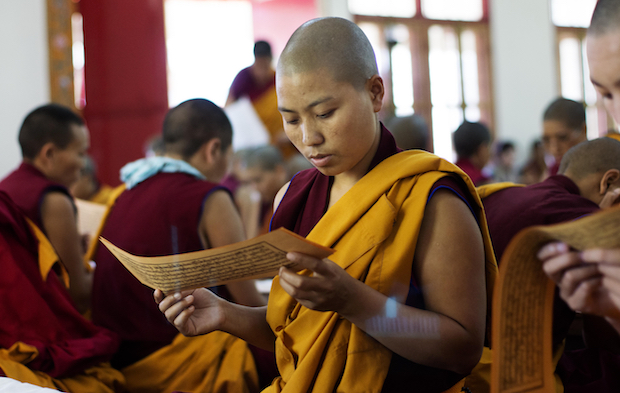
Each year over 230 nuns who live at Dolma Ling Nunnery in India read the entire Kangyur, the 108 volumes of the spoken words of the Buddha, during the month of Saga Dawa. Photo courtesy of Tenzin Sangmo.
Every year, during the month of Saga Dawa, over a period of several days, the nuns at Dolma Ling Nunnery and Institute read the entire Tibetan Buddhist canon or Kangyur, the 108 volumes of the spoken words of the Buddha. Because this month includes some of the holiest days in the Buddhist calendar, the nuns believe they can accumulate more merit by doing such practices at this time. Butter lamps will also be lit during the full moon and everyone will try to practice positive deeds during the full month.
On this day many individuals from the monastic and lay communities also take Thekchen Sojong. In previous years, His Holiness at the main temple gives the vow if he is in town or it is given by an Abbot or Geshe. The vows are to follow the eight Mahayana precepts for 24 hours. Individuals taking this vow to take just one meal that day before noon, after which they fast. One can drink water or light drinks, but not whole milk, thick juice with pulp etc.
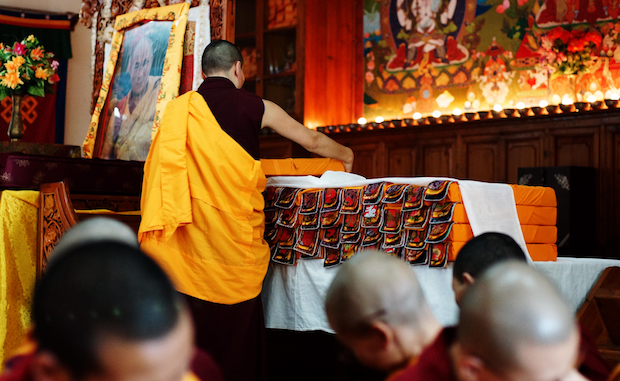
Another sacred text is finished and placed carefully on the stack. It takes several days for the nuns to read the entire Kangyur, the 108 volumes of the spoken words of the Buddha. Photo courtesy of Tenzin Sangmo.
In Dolma Ling Nunnery many nuns eat only twice a day during the month of Saga Dawa. Nuns refrain from eating any solid food after finishing their lunch. They can drink water and are served light tea (with little milk) at 6 p.m.
At Tilokpur Nunnery, the nuns participate a number of pujas such as the Nyugney puja, Vajra puja, Avalokiteshvara mantra, Guru Rinpoche puja, Green Tara puja, Phakmo Dakini puja. The nuns also do prostrations and offer thousands of butter lamps during the month. The other nunneries like Geden Choling also do the Nyugney puja (fasting).
This year, with the coronavirus pandemic and the need for social distancing, Saga Dawa will be different at the nunneries than in the past.

